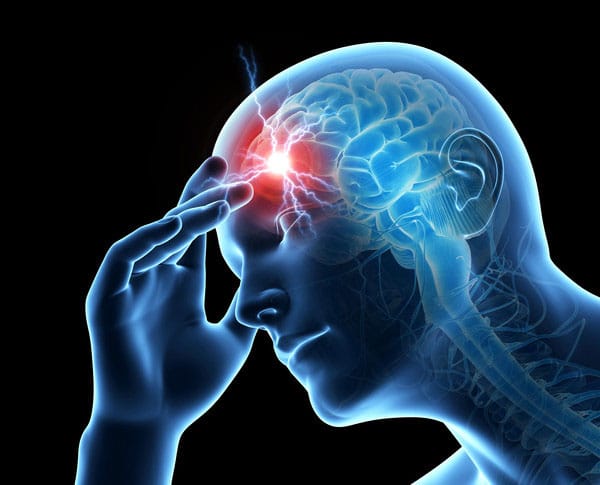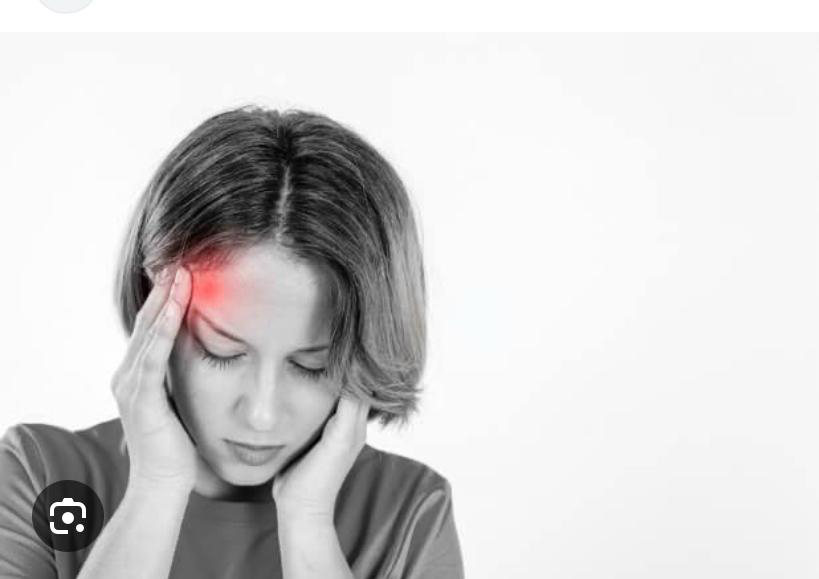If you are tired of having painkillers for your regular migraine and still not getting relieved then you should read this blog post and searching for a natural and long- term relief then you’ve come to the right place.

WHAT IS MIGRAINE?
Migraine is a neurological disease characterized by recurrent moderate to severe headaches often associated with several autonomic nervous system symptoms. Typically the headache affects one half of the head, is pulsating in nature, and lasts for 2 to 72 hrs. The pain is usually throbbing, pulsating and bursting in character. It is often accompanied by other symptoms like nausea or vomiting.
SIGNS AND SYMPTOMS
Migraine affects children and teenagers as well as adults and can progress through four stages: prodrome, aura, attack, and post-drome. Not everyone who has migraines goes through all stages.
1. Prodrome: The prodrome means the symptoms occur hours or days before the headache like constipation, neck stiffness, increased urination, and frequent yawning.
2. Aura: The Aura immediately precedes headaches like vision loss, pins and needles sensations in arms and legs, difficulty speaking, etc.
3. Headache: The pain phase is also known as the headaches phase. (Nausea and vomiting, pain that throbs or pulses, pain usually on one side of your head but often on both sides, sensitivity to light, sound, sometimes smell and touch)
4. Postdrome: The Post-drome effect is experienced following the end of a migraine attack 24- 48 hours following headache-like mood changes, brain fog, tiredness, and difficulty focusing and concentrating.
TYPES OF MIGRAINE
1. Common Migraine (without aura)
2. Classical Migraine (with aura)
3. Mild: one episode per month and can last up to 8 hours
4. Moderate: More than one episode per month, pain is usually intense and can last up to 6- 24 hours associated with nausea, and vomiting.
5. Severe: More than 2-3 episodes of headache per month. Pain is usually severe, throbbing, and can last up to 12-48 hours, associated with vertigo and vomiting.
Few more types of migraine that are not very common
6. Menstrual Migraine: Some females get migraine just before the onset of their menstrual cycle. They can have migraine generally also but before the onset of menses, migraine triggers badly and has intense pain. This usually occurs due to a drop in levels of estrogen levels before menses. It can also occur in females who take contraceptive pills during the withdrawal week due to a sudden drop in estrogen levels.
7. Abdominal Migraine: This mostly occurs in children and they have abdominal pain rather than having a headache or can have a mild headache along with colic. This can last up to a few hours. They may have vomiting, nausea along with stomachache.
8. Hemiplegic Migraine: This type occurs rarely. Patients can experience weakness in one side of the body which can last up to hours or days to resolve and can also be associated with symptoms like vertigo, blurry vision, and problems in hearing or swallowing.
9. Ocular Migraine: This is also called eye migraine. Patients can experience vision loss for some time fully or partially and vision returns normal after some time. It usually attacks one eye every time.
10. Vestibular Migraine: This type occurs usually with vertigo and severe dizziness. It can last from a few minutes to 72 hours.
CAUSES
1. Family history of migraine headaches (70-80%)
2. Medications (Birth control pills, vasodilators)
3. Specific food or alcohol & caffeine
4. Exertion
5. Lack of Sleep
6. Noise, Light, diet
TRIGGERS OF MIGRAINES
Migraine can be triggered by a variety of factors. Common triggers include:
1. Stress: Both physical and emotional stress can trigger migraines.
2. Diet: Certain foods and beverages including aged cheeses, processed food, alcohol, and caffeine can provoke migraine.
3. Sleep: Irregular sleep patterns, including too much or too little sleep, can contribute to migraine.
4. Hormonal Changes: Fluctuations in hormone levels, particularly in women, can trigger migraines. This is often seen around menstrual periods, pregnancy, and menopause.
5. Environmental factors: Bright light, loud noise, strong smell, and change in weather can also act as a trigger.
HOW TO CURE MIGRAINE WITH HOMEOPATHY
Homeopathy treats migraines by addressing the root cause of the problem rather than just alleviating symptoms. This approach involves a comprehensive evaluation of the patient's overall health, lifestyle, and specific migraine symptoms. Homeopathy is highly effective in the treatment of migraine and it is fully capable of healing the patient from this painful disease and giving complete relief from severe headaches.
STEPS INVOLVED
Treating Migraine with Homoeopathy involves several key steps:
Initial Consultation
During the initial consultation, the homeopathic doctor takes a detailed medical history, including the patient's migraine symptoms, triggers, lifestyle, and overall health. This comprehensive evaluation helps in understanding the root cause of the migraine.
Patient History
A thorough patient history is essential to understand the unique aspects of the individual's migraine. This includes details about the frequency, duration, and intensity of the migraines as well as any associated symptoms and triggers. I
History also includes the patient’s behavior and stress and his perception during that phase is important in selecting medicine.
Remedy selection
The selection of the remedy is based on the patient's specific symptoms and overall health profile.
EFFECTIVENESS OF HOMEOPATHIC TREATMENT FOR MIGRAINES
Research and patient experience suggest that homeopathy can be effective. Many patients report significant improvement in their symptoms and a reduction in the frequency and severity of migraine attacks. At Pinaakin we prefer to give constitutional medicine by understanding the whole history of the patient which helps them to get rid of this.
TOP 6 HOMEOPATHIC MEDICINES FOR MIGRAINE
Here are 6 commonly used homeopathic remedies that give relief to migraine symptoms.
1. Belladonna: when pain comes on suddenly and is associated with intense, pulsating headaches and a red face.
2. Bryonia: when pain in the head is worsened by motion and better by putting pressure on the head.
3. Glonoinum: When pain is triggered by exposure to sunlight or heat and is associated with throbbing, congestive headache.
4. Natrum muriaticum: Indicated for migraines triggered by emotional stress or grief and is typically on one side of the head.
5. Iris versicolor: Effective for migraine with gastric issues, such as nausea and vomiting.
6. Gelsemium: Indicated for migraine triggered by anticipation or excitement and lack of energy.
Remember, these remedies are just for reference, it is essential to consult a qualified homeopathic practitioner for personalized treatment based on your specific symptoms to get the Best treatment for Migraine.

